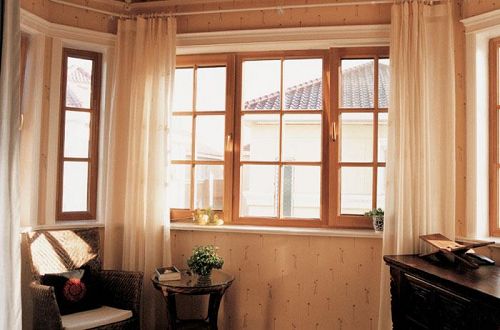Energy saving doors and windows provide a broad space for development
2025-08-13 07:35:51
 In China, doors and windows are among the most energy-intensive components of building enclosures, accounting for 40% to 50% of the total energy consumption. When it comes to heating or cooling, single-pane glass is responsible for up to 30% to 50% of heat loss in winter, while solar radiation entering through the same glass can add 20% to 30% to air conditioning loads in summer. Compared to buildings in Canada and other northern countries, Chinese buildings tend to lose more heat through their windows, making energy-efficient solutions even more critical.
Residential buildings often feature complex facades and irregular shapes, which make them less energy-efficient. Many use large windows and open spaces to maximize natural light, but this increases the window-to-wall ratio, negatively impacting energy performance. Energy efficiency standards for residential buildings take into account both the shape coefficient and the window-to-wall ratio. Based on energy consumption analysis in cold regions and considering current energy-saving technologies, limits on the thermal transmittance of building envelopes have been set.
In severe cold and cold regions, heat loss through windows during the heating season is the main factor affecting energy use. Therefore, windows need to have low thermal conductivity to minimize heat transfer. The impact of windows on energy consumption is twofold: first, their thermal properties affect indoor temperatures during both heating and cooling seasons; second, solar radiation entering through windows increases internal heat gain. In winter, solar heat gain can be beneficial, so reducing the window's heat transfer coefficient helps lower heat loss. In summer, however, excessive solar heat becomes a cooling load, so minimizing solar entry and controlling temperature differences across windows is essential for energy savings.
As energy-saving efforts continue, the types of glass used in doors and windows have evolved. From float glass to heat-absorbing and reflective glass, Low-E (low-emissivity) glass has emerged as the most promising option due to its excellent thermal insulation, optical performance, and environmental benefits. With national policies promoting building energy efficiency, the production of Low-E glass has grown rapidly. As energy-saving design standards for residential buildings in cold areas become more widespread, the adoption of Low-E glass will increase further. This trend not only supports energy conservation in homes but also opens new opportunities for the development of advanced energy-saving glass technologies.
In China, doors and windows are among the most energy-intensive components of building enclosures, accounting for 40% to 50% of the total energy consumption. When it comes to heating or cooling, single-pane glass is responsible for up to 30% to 50% of heat loss in winter, while solar radiation entering through the same glass can add 20% to 30% to air conditioning loads in summer. Compared to buildings in Canada and other northern countries, Chinese buildings tend to lose more heat through their windows, making energy-efficient solutions even more critical.
Residential buildings often feature complex facades and irregular shapes, which make them less energy-efficient. Many use large windows and open spaces to maximize natural light, but this increases the window-to-wall ratio, negatively impacting energy performance. Energy efficiency standards for residential buildings take into account both the shape coefficient and the window-to-wall ratio. Based on energy consumption analysis in cold regions and considering current energy-saving technologies, limits on the thermal transmittance of building envelopes have been set.
In severe cold and cold regions, heat loss through windows during the heating season is the main factor affecting energy use. Therefore, windows need to have low thermal conductivity to minimize heat transfer. The impact of windows on energy consumption is twofold: first, their thermal properties affect indoor temperatures during both heating and cooling seasons; second, solar radiation entering through windows increases internal heat gain. In winter, solar heat gain can be beneficial, so reducing the window's heat transfer coefficient helps lower heat loss. In summer, however, excessive solar heat becomes a cooling load, so minimizing solar entry and controlling temperature differences across windows is essential for energy savings.
As energy-saving efforts continue, the types of glass used in doors and windows have evolved. From float glass to heat-absorbing and reflective glass, Low-E (low-emissivity) glass has emerged as the most promising option due to its excellent thermal insulation, optical performance, and environmental benefits. With national policies promoting building energy efficiency, the production of Low-E glass has grown rapidly. As energy-saving design standards for residential buildings in cold areas become more widespread, the adoption of Low-E glass will increase further. This trend not only supports energy conservation in homes but also opens new opportunities for the development of advanced energy-saving glass technologies.The characteristic of the cup head square neck Bolt is that the head is made into a semicircular ball, and a section of square neck is made under the head. A section of square hole shall also be made on the connected part connected with this bolt. When the bolt is inserted into the connected part and the nut is screwed on, the bolt will not rotate because of the square neck. Its head is relatively smooth, and it is not easy to hook other objects.
Cup Head Square Neck Bolt,Carriage Bolts,Round Head Square Neck Bolts,Cup Head Square Neck Bolts
Jiangsu Jiajie Special Screw Co., Ltd , https://www.jiajiescrewcompany.com